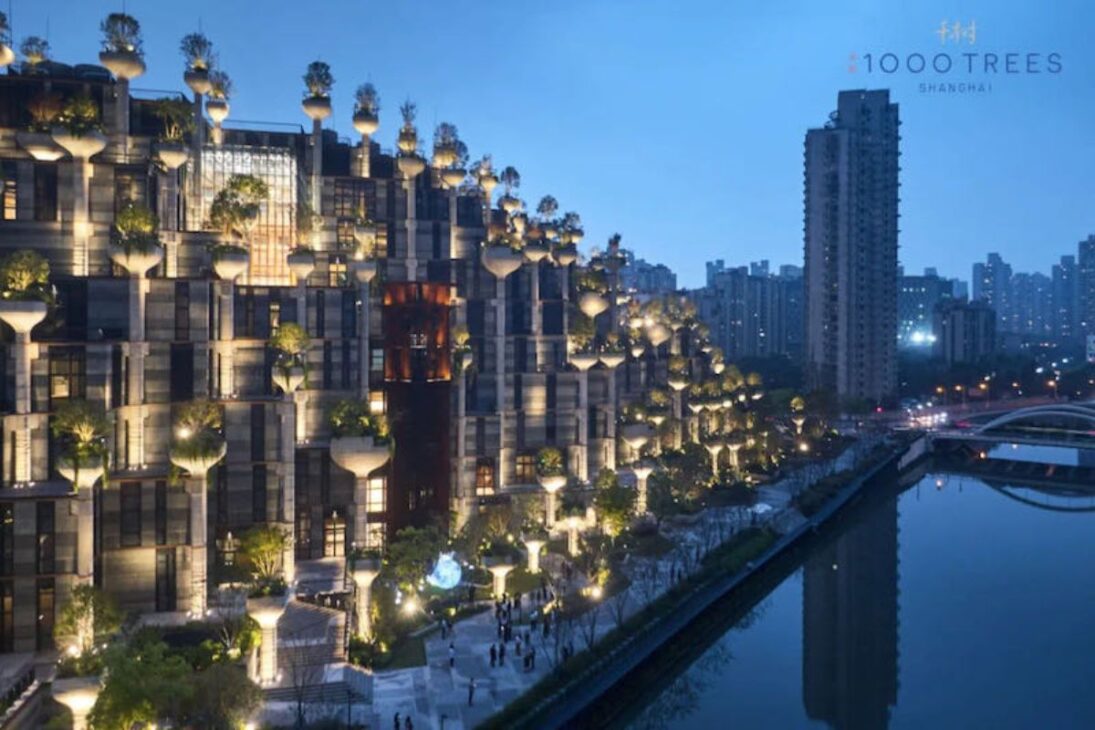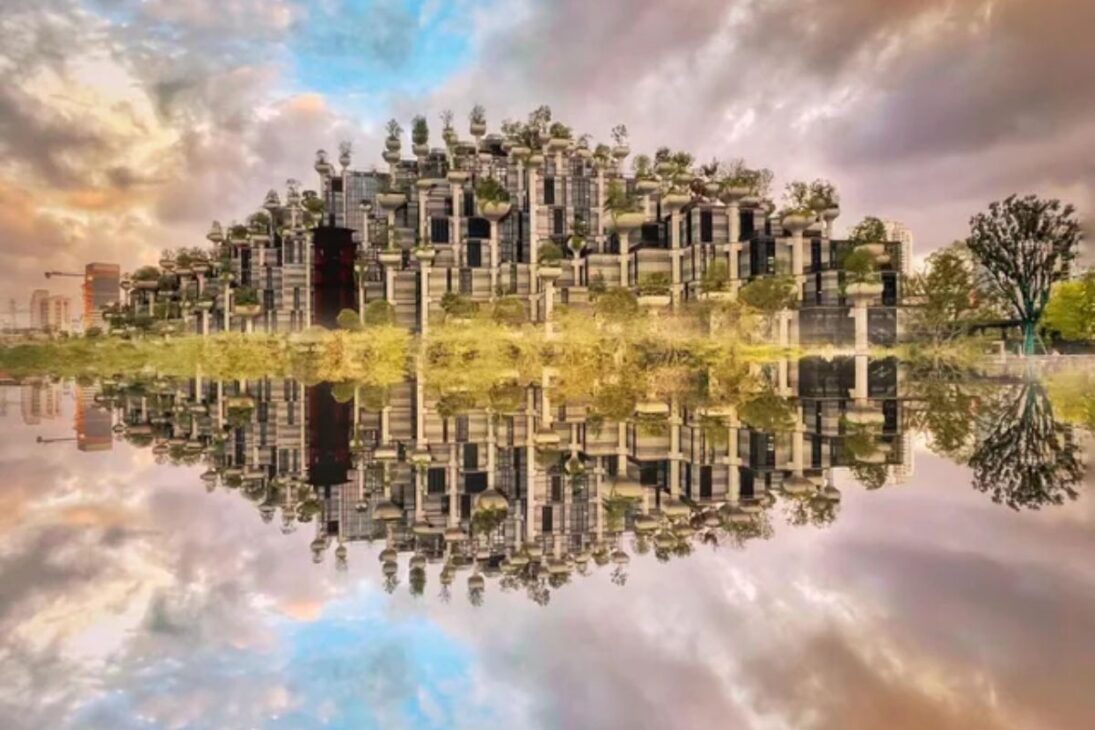Published
03/11/2025 às 12:53
Designed by the British architect Thomas Heatherwick, the Tian’an Qianshu Shopping Mall, known as China’s ‘Sky Garden’This building breaks the boundaries of traditional architecture by integrating vegetation and structure into a single organism. Located in the Putuo district of Shanghai, the 300 m² building was conceived as an artificial hill covered in plants and trees growing on hundreds of structural columns.
Each of these columns acts as a large planter, with built-in irrigation and drainage systems. The result is a structure that literally… breathe, filtering the air, reducing heat and creating a functional urban ecosystemThe concept was born from the desire to do a building that behaves like a living landscapewhere the visitor not only consumes, but experiences the environment as part of a vertical forest.
The engineering that supports green
The project occupies a plot of almost 59 thousand square meters, with a total built area of 300 thousand square meters.
— ARTICLE CONTINUES BELOW —
The complex brings together more than 90 stores, 63 restaurants and ample communal spaces distributed among basements, retail floors, and panoramic terraces.
Green infrastructure includes more than 1.000 trees e 250 smaller plants de 46 different species, strategically positioned to create shade and biodiversity.
The facade acts as an active ecological system. The plants reduce urban noise, balance humidity, and absorb some of the carbon emissions.
O China’s ‘Sky Garden’ It functions as an integrated microclimate, with natural ventilation and automated maintenance, demonstrating how Environmental engineering and aesthetics can coexist in a precise and functional way..
Urban revitalization and social transformation
O China’s ‘Sky Garden’ It originated from a project to revitalize the surrounding area of Suzhou Creek, an area formerly occupied by disused factories.
The proposal was to transform an abandoned industrial zone into a new hub for culture, commerce, and leisure.
Architecture has transformed the space into an icon of urban regeneration, promoting coexistence between nature and population density.
A visit to the complex is a sensory experience.
Are 400 steps that lead the public through hanging gardens, panoramic balconies and green walkways., overlooking the Shanghai skyline.
The space has become a tourist attraction and a symbol of the city’s ability to adapt to the 21st century without losing its visual and environmental identity.
The second phase and the future of the project.
The second phase of the project is underway and includes a new tower with… 19 floorswhich will house a hotel, offices and residential areas.
The expansion will consolidate the complex as one of the largest green complexes in Asia, combining high-density architecture and applied sustainability.
Thomas Heatherwick, who is also responsible for urban landmarks in London and Singapore, argues that the China’s ‘Sky Garden’ It represents a new model of global urbanism.
For the architect, The city of the future should not only house people, but also cultivate life..
The project demonstrates that it is possible to incorporate greenery without sacrificing functionality, economy, or urban scale.
O China’s ‘Sky Garden’ It’s more than just a state-of-the-art shopping mall.
It is a bioclimatic architecture manifestoThis is an example of how large metropolises can grow intelligently, preserving air quality, beauty, and human contact with greenery.
Do you believe that projects like China’s ‘Sky Garden’ can redefine how we live in the cities of the future?





Comments are closed.